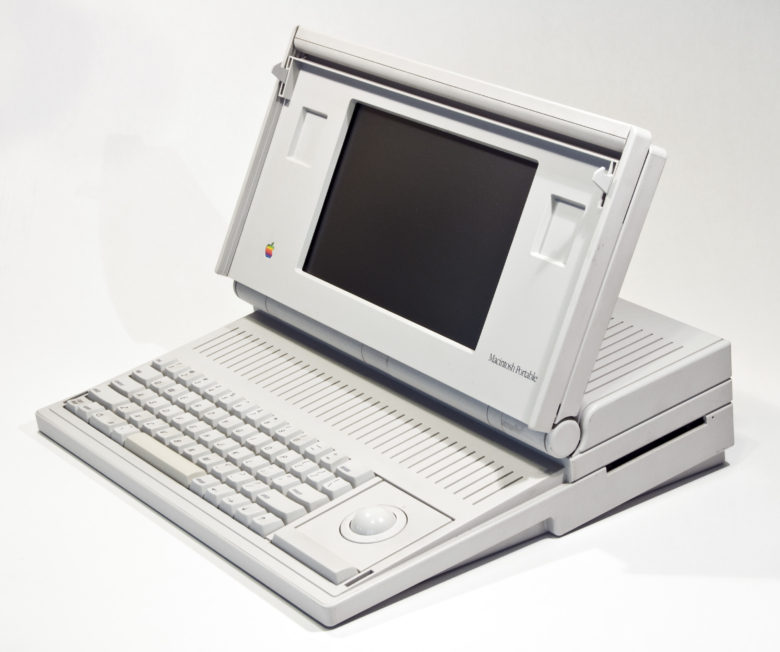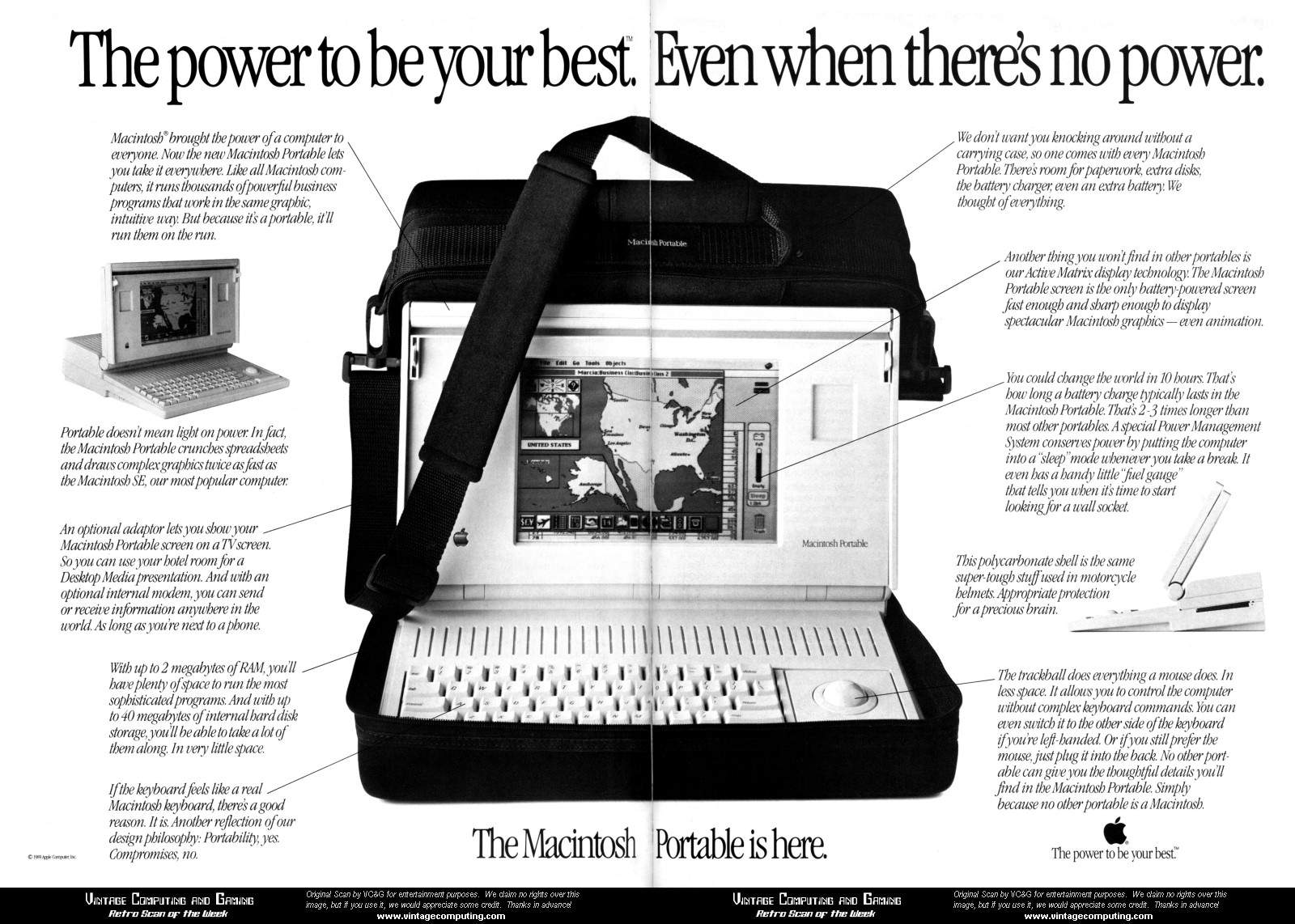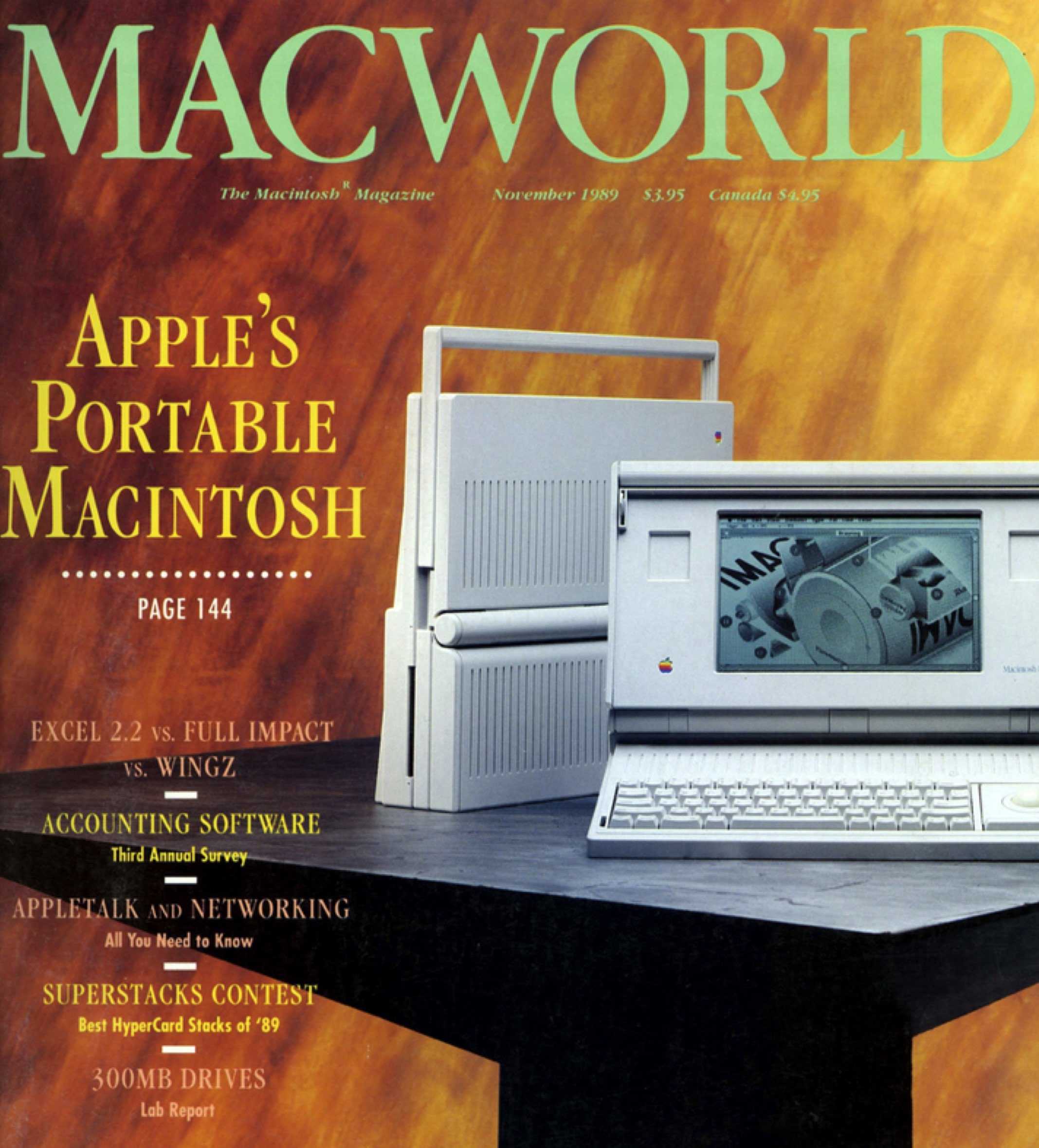 September 20, 1989: Apple releases the Macintosh Portable, the first battery-powered Mac you could take on the road.
September 20, 1989: Apple releases the Macintosh Portable, the first battery-powered Mac you could take on the road.
At a time when Tim Burton’s Batman is flying high in theaters, and Madonna is shocking audiences at the MTV Video Music Awards, this ahead-of-its-time product lays the groundwork for Apple’s looming laptop revolution.
Macintosh Portable: The Mac goes mobile
Apple’s development work on a portable Mac actually predates the launch of the original Macintosh. Mac project innovator Jef Raskin envisioned the Mac as a portable computer.
However, as Apple co-founder Steve Jobs took over work on the project, this ideal receded into the background. The only nod toward portability on the 1984 Macintosh that shipped was its built-in handle, which made moving the desktop machine easier.
Jobs tried to convince the Apple board to develop what he was then calling a “BookMac” in April 1985. However, he left the company before this could amount to anything. The idea eventually got revived, however, resulting in the Macintosh Portable.
Powerful, yes. Portable, sorta.

Photo: The Register
Compared with today’s ultra-slim Apple laptops, the Macintosh Portable appears almost comically heavy. It weighs in at a lap-deadening 15.8 pounds. The first portable Mac also measured more than 4 inches thick, and took up 225.7 square inches of desk (or lap) real estate.
Like many Macs — particularly at that time — the Macintosh Portable occupied a so-called “high right” quadrant of the market. It delivered advanced technology, but at a premium price.
The device cost $6,500 in 1989 dollars, the equivalent of more than $16,000 today. This rose by $448 if you added a hard drive and modem.
Fortunately, the Macintosh Portable brought impressive specs by the standards of the time. And the price wasn’t actually too unreasonable compared to a rival computer with similar performance.
Macintosh Portable specs

Photo: Apple
In terms of specs, the 16 MHz 68000 CPU Macintosh Portable was actually faster than the Mac SE and Macintosh II, which ruled Apple’s desktop lineup at the time. It also included a gorgeous 9.8-inch active-matrix LCD display, offering 640-by-400-pixel black-and-white graphics. A later upgrade brought backlighting to the Mac Portable, although that cut battery life in half.
This was also the first Mac to come with a preinstalled operating system, which is standard today.
Mirroring Apple’s post-Jobs strategy for the Macintosh, the Mac Portable was easily upgradable thanks to expansion slots. In stark contrast to today’s Apple devices, opening the Macintosh Portable proved as straightforward as pressing two buttons on the back of the case. That popped the lid off without the need for a screwdriver.
The Macintosh Portable isn’t without its critics. However, like the original Mac, it fared better critically than it did commercially. It wasn’t until the later launch of the PowerBook that Apple really started finding its groove with mobile computers.
The Mac Portable also suffered from some odd quirks. For instance, it wouldn’t run on AC power alone — although the monstrous battery could keep going for up to 10 (!) hours on a single charge.
Mac Portable: Futuristic but flawed
Ultimately, the Macintosh Portable seems like a lot of other Apple products from that time: innovative, slightly flawed, but beloved by a certain group of users. Sadly, they didn’t represent enough of a market segment to make it a hit.
Nonetheless, given that the overwhelming majority of Apple’s revenue today comes from mobile devices, it would be difficult to argue that the company wasn’t following the right path with this product. The Mac Portable was just a few years too early (and a few pounds too heavy).
Do you remember the Macintosh Portable? Leave your comments and recollections below.


